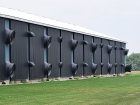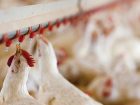
Ask the Vet: Antibiotic reduction
By Tom Inglis
Features Ask the VetWhat is the first step in reducing antimicrobial use?
 What we have learned from RWA production is that we can apply these efforts to all production systems and see improvements. Photo: Adobe Stock
What we have learned from RWA production is that we can apply these efforts to all production systems and see improvements. Photo: Adobe StockAntibiotic resistance is real. In Canada and around the world, fewer antimicrobials remain effective in controlling infection as more microbes become resistant in both human and veterinary medicine.
Experts are concerned about a possible post-antibiotic era where common infections and minor injuries once again become deadly in the 21th century as so-called superbugs develop.
Already, more than 18,000 patients in Canada acquire multi-drug resistance strains of bacteria each year. The World Health Organization (WHO) has called this issue a global emergency. It is recommending that livestock and poultry producers stop using antibiotics routinely to promote growth and prevent disease in healthy animals.
On November 7, 2017, WHO issued a directive to stop giving antibiotics to healthy animals. While the development of multi-drug resistant strains of bacteria is a complex, multifactorial and poorly understood, there is little question that exposing bacteria to antimicrobials is a key step in the process. So, for those of us working in the food animal industry, the way we use antimicrobials is under careful scrutiny.
Outside of scientific and regulatory pressure, consumers and retailers are demanding access to raised without antibiotics (RWA) or no antibiotics in human medicine (NAIHM) branded products.
How is the Canadian poultry industry responding to the concerns of governments and consumers over antimicrobial resistance? The answer is with leadership and careful consideration of the health of Canadians now and in the future. What’s more, it’s safe-guarding welfare, sustainability and health. The following proactive antimicrobial use (AMU) reduction strategies are in play:
- Voluntary elimination of the preventive use of category I (very high importance) in commercial chickens and turkeys and breeders in May 2014.
- Withdrawal of the preventive use of category I in parent stock by May 2015.
- The Canadian Hatchery Federation (CHF) developed a turkey-specific AMU reduction strategy to eliminate the preventive use of category II antibiotics by October 1, 2017.
- Chicken Farmers of Canada has embarked on an AMU reduction strategy that eliminated the preventative use of category II by the end of 2018 and, pending reassessment, elimination of category III for prevention by the end of 2020.
- Turkey Farmers of Canada has embarked on an AMU reduction strategy that eliminated the preventive use of category II antibiotics by the end of 2018 and category III antibiotics by the end of 2019.
- Certain supply chains in the past few years have embarked on RWA production and marketing campaigns to provide such products for consumers who demand them.
It is noteworthy that all chicken and turkey farmers are mandated to comply with the AMU reduction strategies of their respective boards. It is an individual decision whether a farmer commits to production methods like RWA or organic but they must respect AMU strategy requirements.
Conventional production under these voluntary national board directions is evolving away from preventative use of antimicrobials, while relying on diagnosis and therapeutic treatments. RWA, in contrast, is focused on avoiding all uses of antimicrobials in production.
These programs are not mutually exclusive in that flocks that start out as RWA may have to be treated for health and welfare reasons and the overall reduction in use and targeted use of antimicrobials in conventional and specialty programs is an improvement. What we have learned from RWA production is that we can apply these efforts to all production systems and see improvements.
The first step in reducing antimicrobial use is understanding the farm specific risk factors contributing to the infections we have treated or prevented with antibiotics. When producers take steps to measure, understand and improve these risk factors they can see long-term success in RWA and conventional production. Some of the opportunities to focus on include:
- Brooding: Evaluate temperature, humidity and CO2 levels. Short-term chilling of flocks can lead to long-term immunosuppression, delayed gut development and decreased growth rates. Completing brooding checks can ensure all chicks have an adequate crop fill and access to fresh water.
- Water quality: Birds will consume twice as much water as feed. Water quality plays a big role in the overall health of the flock. Biofilm in water systems can provide safe harbor for pathogenic bacteria (even in the presence of water sanitizers), including bacteria carrying antibiotic resistance genes. Producers can do biofilm testing and bacterial testing over and above what is required in on-farm food safety programs. Random samples from in-barn water lines can have very little to no bacteria detectable when water quality protocols are successful.
- Coccidiosis management: Evaluating intestinal health at key coccidiosis challenge periods will be beneficial in understanding overall flock health. This tool will help guide medication and management decisions. Protocols can include oocyst per gram (OPG) testing and coccidiosis scoring or health scoring systems with live birds.
- Serology: Routinely collecting blood from flocks at slaughter and evaluating exposure to different bacteria/viruses can help guide vaccination programs. Different operations may require different vaccination programs to control field disease challenge.
- Biosecurity: Evaluating biosecurity protocols and compliance with existing protocols should be done on a regular basis. Having an outside set of eyes look at what is happening on your operation and provide feedback can help keep these programs effective.
- Ventilation: Evaluate temperature, humidity and CO2 levels outside of the brooding period. Completing a ventilation audit can help identify any weak points. Over time with genetic advancements the demands on ventilation systems have increased.
You can use all of these tools to help navigate within a production scheme that is moving away from antibiotic use. Every operation is unique, and what may be causing issues at your farm may be under control at another farm.
Working with a trusted advisor, such as an experienced poultry veterinarian, can help to identify farm specific risk factors that contribute to the infections we treat or prevent with antibiotics.
When these risk factors are properly identified they can be addressed and fixed. While we will not eliminate antibiotic treatments for sick flocks, when required we can limit antimicrobial use in our operations.
Tom Inglis is managing partner and founder of Poultry Health Services, which provides diagnostic and flock health consulting for producers and allied industry. Please send questions for the Ask the Vet column to poultry@annexweb.com.
Print this page

